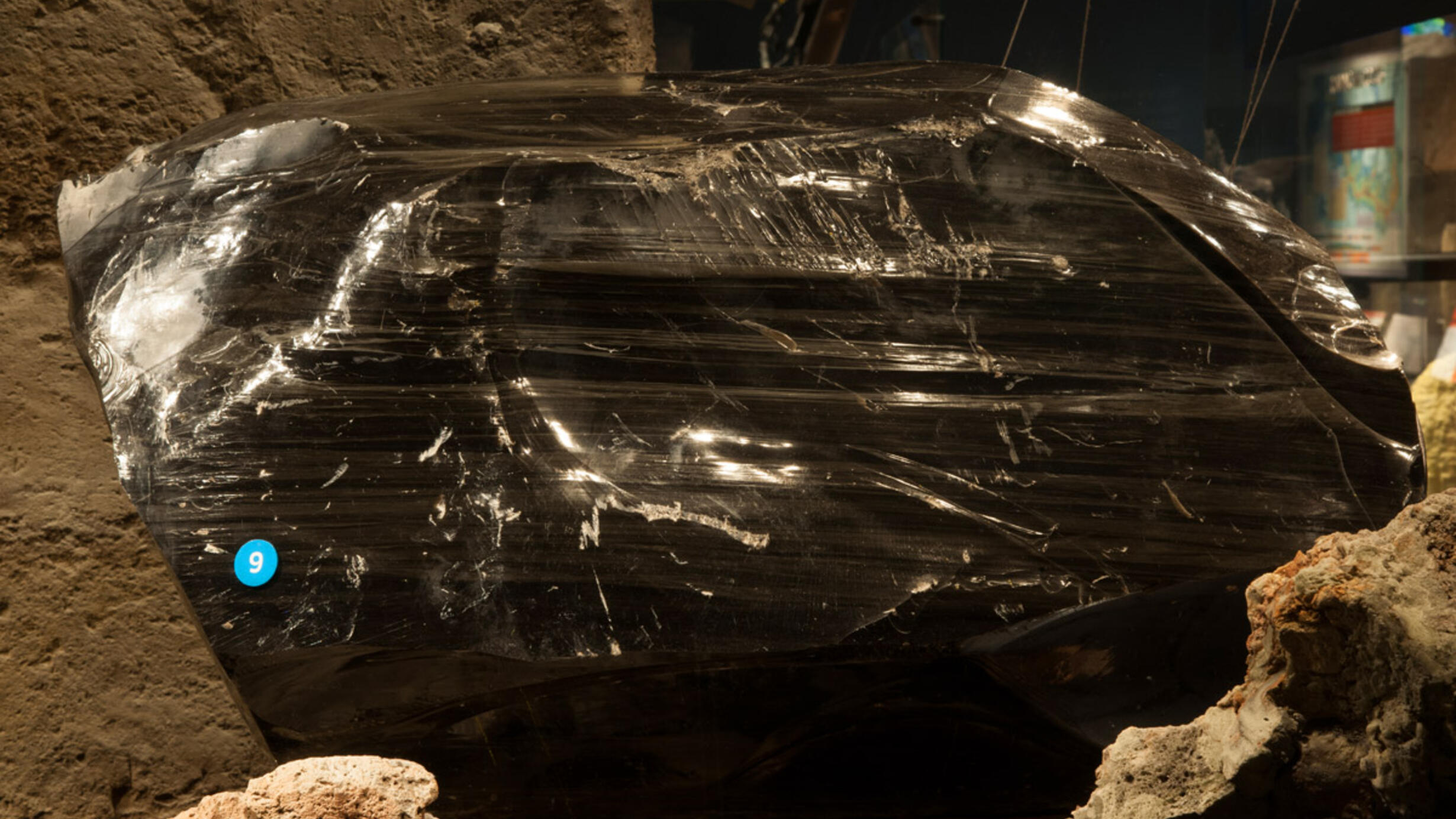Obsidian
Part of Hall of Planet Earth.
 AMNH/R.Mickens
AMNH/R.Mickens Obsidian is a volcanic glass, a comparatively rare and crystal-poor form of rhyolite, the most silica-rich lava. It forms when lava is quenches, or rapidly cooled. Obsidian is a major component of Glass Mountain.
Provided by Jeff Dinnel, Tionesta, California
Ro Kinzler and Dr. Julie Donnelly-Nolan of the United States Geological Survey stand on the Burnt lava flow, a 3,000 year old andesite flow. Both the flat-topped cinder cone behind them and the rough texture of the lava are typical of this type of flow. Dr. Donnelly-Nolan is at work on a geologic map of the volcano for the United States Geological Survey.
photo credit: Jackie Beckett, © American Museum of Natural History
photo credit: Jackie Beckett, © American Museum of Natural History
Ro Kinzler on top of Glass mountain searching for a large boulder of obsidian for the exhibition.
photo credit: Jackie Beckett, © American Museum of Natural History
photo credit: Jackie Beckett, © American Museum of Natural History